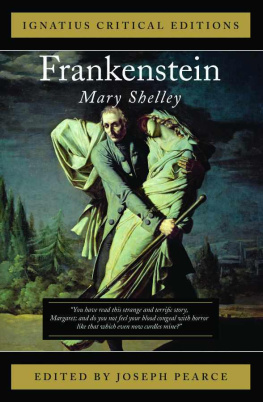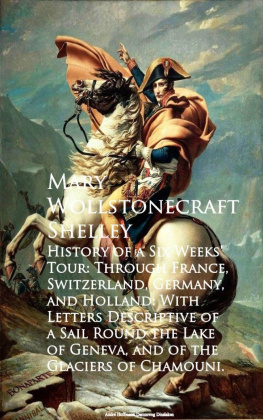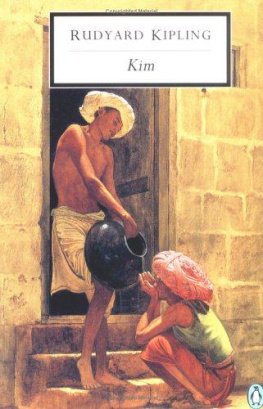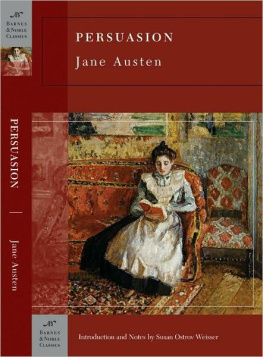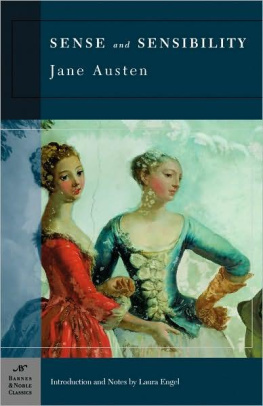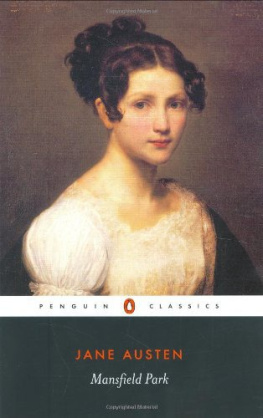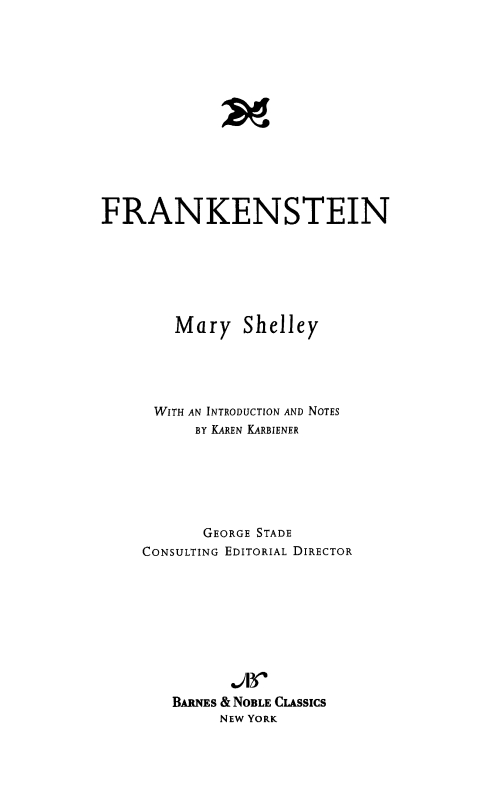
Table of Contents
FROM THE PAGES OF FRANKENSTEIN
We are unfashioned creatures, but half made up. (page 24)
Thus strangely are our souls constructed, and by such slight ligaments are we bound to prosperity or ruin. (page 37)
So much has been done, exclaimed the soul of Frankensteinmore, far more, will I achieve: treading in the steps already marked, I will pioneer a new way, explore unknown powers, and unfold to the world the deepest mysteries of creation. (page 42)
It was on a dreary night of November that I beheld the accomplishment of my toils. With an anxiety that almost amounted to agony, I collected the instruments of life around me, that I might infuse a spark of being into the lifeless thing that lay at my feet. It was already one in the morning; the rain pattered dismally against the panes, and my candle was nearly burnt out, when, by the glimmer of the half-extinguished light, I saw the dull yellow eye of the creature open; it breathed hard, and a convulsive motion agitated its limbs. (page 51)
I thought I saw Elizabeth, in the bloom of health, walking in the streets of Ingolstadt. Delighted and surprised, I embraced her; but as I imprinted the first kiss on her lips, they became livid with the hue of death; her features appeared to change, and I thought that I held the corpse of my dead mother in my arms. (page 51)
Did any one indeed exist, except I, the creator, who would believe, unless his senses convinced him, in the existence of the living monument of presumption and rash ignorance which I had let loose upon the world? (page 72)
You accuse me of murder; and yet you would, with a satisfied conscience, destroy your own creature. Oh, praise the eternal justice of man! (page 90)
You accuse me of murder; and yet you would, with a satisfied conscience, destroy your own creature. Oh, praise the eternal justice of man! (page 90)
When I looked around, I saw and heard of none like me. Was I then a monster, a blot upon the earth, from which all men fled, and whom all men disowned? (page 107)
Slave, I before reasoned with you, but you have proved yourself unworthy of my condescension. Remember that I have power; you believe yourself miserable, but I can make you so wretched that the light of day will be hateful to you. You are my creator, but I am your master;obey ! (page 149)
The fiend was not here: a sense of security, a feeling that a truce was established between the present hour and irresistible, disastrous future, imparted to me a kind of calm forgetfulness, of which the human mind is by its structure peculiarly susceptible. (page 163)
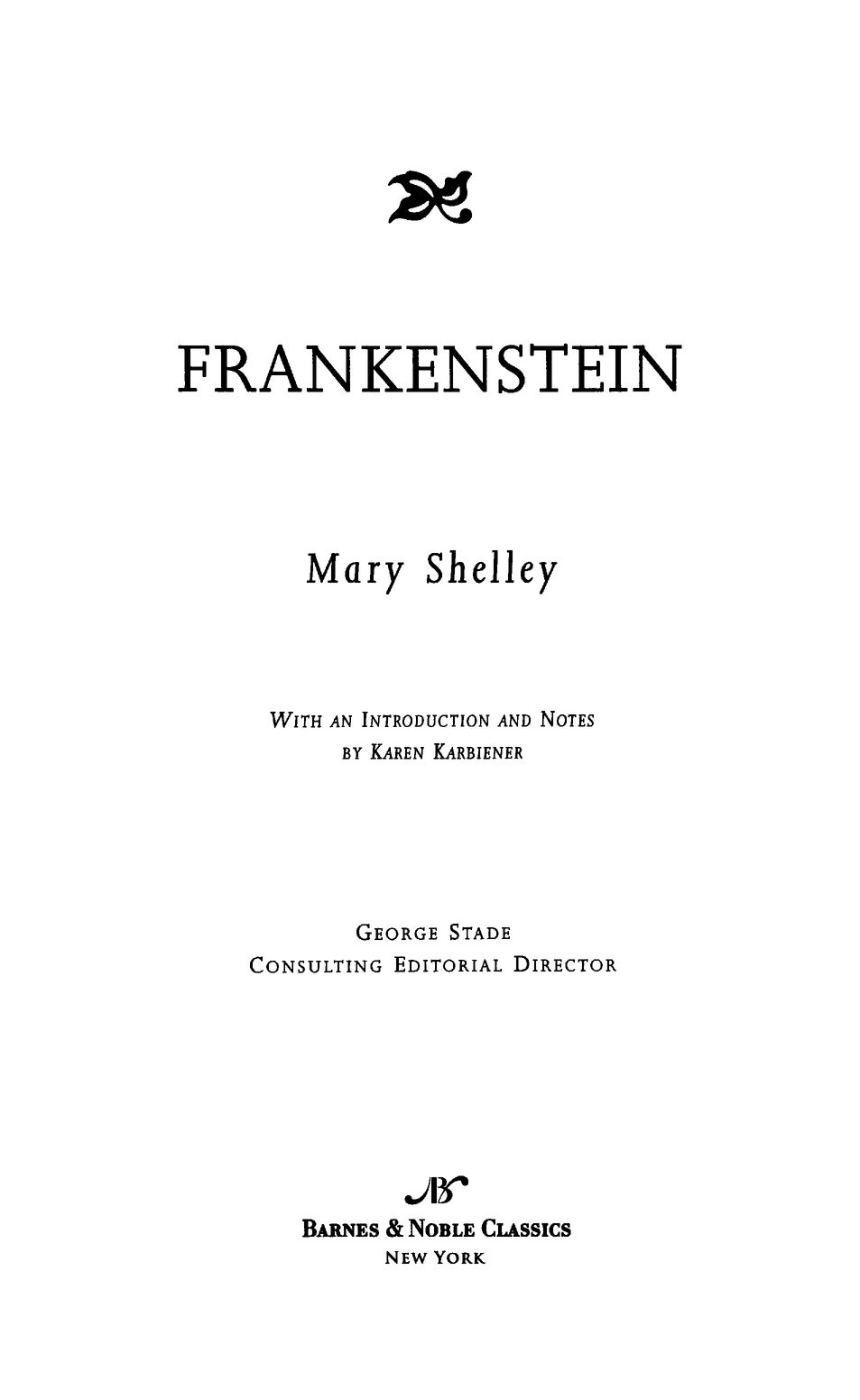
MARY SHELLEY
Though her life was fraught with personal tragedy, Mary Shelley was destined for literary greatness. Mary Wollstonecraft Godwin was born on August 30, 1797, to radically thinking parents: William Godwin, anarchist, philosopher, and author of the novel The Adventures of Caleb Williams (1794), and Mary Wollstonecraft, a well-known proto-feminist who wrote A Vindication of the Rights of Woman. Mary Wollstonecraft died from complications of childbirth eleven days after her daughter was born.
At age sixteen, Mary eloped to France with the Romantic poet Percy Bysshe Shelley, for which Marys father temporarily disowned her. In 1816, Shelleys first wife, Harriet, whom he had abandoned for Mary, drowned herself in the Serpentine River. Mary and Percy married days after Harriets body, pregnant with Shelleys unborn child, was discovered. The Shelleys moved to the shores of Lake Geneva, and there formed a literary circle that included George Gordon, Lord Byron. The group regularly held all-night discourses on scientific and supernatural topics. After one such discussion, in which Byron suggested a friendly ghost story competition, Mary had a dream that became the inspiration for Frankenstein; or, The Modem Prometheus, her first novel. Published anonymously in 1818, Frankenstein was an instant success.
Of the four children Mary had with Percy Shelley, only one lived beyond the age of three: their son Percy Florence. In June 1821, Mary nearly died from the miscarriage of a fifth child. A month later, Shelley drowned in a boating accident in the Gulf of Spezia, at the age of twenty-nine.
Mary Shelley devoted the rest of her life to writing novels, editing Shelleys poetry for posthumous publication, and traveling with her son. She died on February 1, 1851, and was buried at Bournemouth with her parents.
THE WORLD OF MARY SHELLEY AND FRANKENSTEIN
| 1765 | Horace Walpoles The Castle of Otranto, the first true Gothic novel, is published. |
| 1789 | The French Revolution erupts, signaling the end of the French monarchy, the rise of the middle class, and improvements in the social status of women; this intense and violent revolt has a pro found impact on the Romantic literary movement. |
| 1791 | Italian physician Luigi Galvani announces his discovery of animal electricity, which manifests in the twitching of nerves and mus cles when an electric current is applied. |
| 1796 | Mary Wollstonecraft, author of the proto-feminist essay A Vindi cation of the Rights of Woman and a member of an intellectually radical circle that includes William Blake, William Godwin, Thomas Hol croft, James Johnson, Thomas Paine, and William Wordsworth, begins an affair with Godwin. |
| 1797 | The two marry. Mary Wollstonecraft gives birth to Mary Woll stonecraft Godwin and dies from complications eleven days later. |
| 1798 | Wordsworth and Samuel Taylor Coleridge publish The Lyrical Bal lads, a collaboration that helps shape the sensibilities of the Ro mantics. William Godwin publishes Memoirs of the Author of A Vindication of the Rights of Woman, an emotional biography of Mary Wollstonecraft. The book, which details Wollstonecrafts suicide attempts and the couples sex life, causes much scandal. Before she begins writing Frankenstein, Mary Shelley reads the memoir sev eral times. |
| 1801 | Godwin marries Mary Jane Clairmont, whose son, Charles, and daughter, Jane, join the household; also living with them is Fanny Imlay, Mary Wollstonecrafts daughter by Captain Gilbert Imlay, an American. |
| 1812 | The poet Percy Bysshe Shelley, recently expelled from Oxford for refusing to admit to writing The Necessity of Atheism, initiates a cor respondence with William Godwin, whom he admires; Godwin, famous for his 1793 Enquiry Concerning Political Justice, is also admired by Coleridge, among others. Mary spends ten blissful months in |
| Dundee, Scotland; she falls in love with the Scottish landscape, which will feature prominently in Frankenstein. |
| 1814 | At age sixteen, Mary elopes with Percy Shelley, taking along her stepsister, Jane. Marys father refuses to speak to her for the next two years. Jane, who later changes her name to Claire, becomes a semipermanent fixture in Percy and Marys household. Percy continues to see his wife Harriet intermittently. |
| 1815 | Mary gives premature birth to an unnamed daughter who dies within days. Percy makes the acquaintance of the critic and essayist William Hazhtt and the poet John Keats. |
| 1816 | Mary gives birth to a son, William. The family relocates to Geneva, where they meet George Gordon, Lord Byron. In a friendly ghost story competition, Byron produces A Fragment. His literary friend and doctor John William Pohdori writes The Vampyre: A Tale, which is not published until 1819, when it is attributed to Byron; The Vampyre later greatly influences Bram Stokers Dra cula ( 1897 ) . At the encouragement of Percy and Byron, Mary Shel ley begins writing Frankenstein. Marys half-sister, Fanny, commits suicide. Harriet Shelley drowns herself and her unborn child, her third by Percy. Percy and Mary, who is also pregnant, marry at St. Mildreds Church in London on December 30. William Godwin reconciles with his daughter. |


